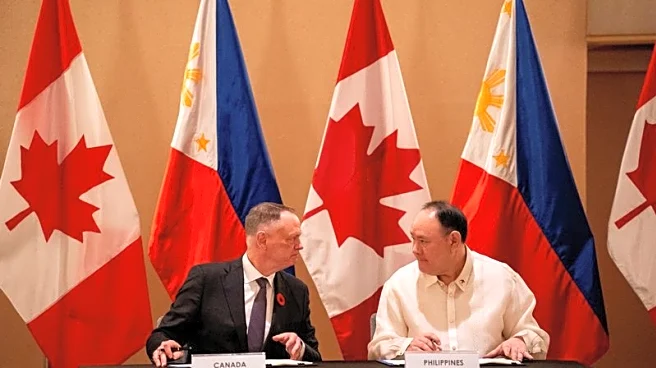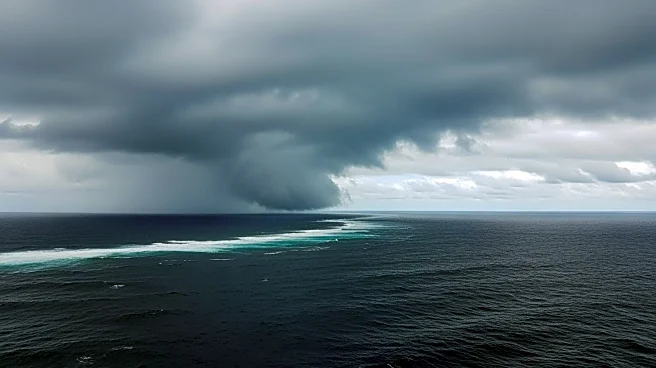What's Happening?
The Philippines is leading an initiative to establish a regional disaster insurance program in Southeast Asia, aimed at financially protecting critical infrastructure such as hospitals, schools, and roads
from natural catastrophes. This initiative, known as the Southeast Asia Disaster Risk Insurance Facility Sovereign Asset and Fiscal Empowerment (SEADRIF-SAFE), was discussed at the 8th Technical Meeting of SEADRIF in Kyoto, Japan. The program seeks to embed disaster insurance into development projects funded by bilateral and multilateral partners, allowing governments to begin rebuilding immediately after a disaster strikes, as funds will be readily available.
Why It's Important?
The establishment of SEADRIF-SAFE is significant as it addresses the regional challenges posed by natural disasters, which can have devastating impacts on infrastructure and economies. By pooling risks at a regional level, member countries can reduce insurance costs, expand coverage, and accelerate recovery efforts, thereby making communities safer and more resilient. This initiative not only aims to protect public assets but also ensures the economic stability and future strength of Southeast Asia, highlighting the importance of proactive measures in disaster management.
What's Next?
The next steps involve further exploration and development of the SEADRIF-SAFE facility by member countries. As the initiative progresses, governments in Southeast Asia will likely engage in discussions to finalize the structure and implementation of the insurance program. This may include negotiations with bilateral and multilateral partners to secure funding and support for embedding disaster insurance into development projects. The success of this initiative could lead to enhanced regional cooperation and resilience against natural disasters.
Beyond the Headlines
The SEADRIF-SAFE initiative could have broader implications for regional cooperation in Southeast Asia, fostering a united approach to disaster management and resilience building. It may also set a precedent for other regions facing similar challenges, encouraging the development of collaborative insurance schemes to mitigate the impacts of natural disasters. Additionally, the program could influence policy decisions related to infrastructure development, emphasizing the need for financial protection and sustainability in the face of environmental risks.













